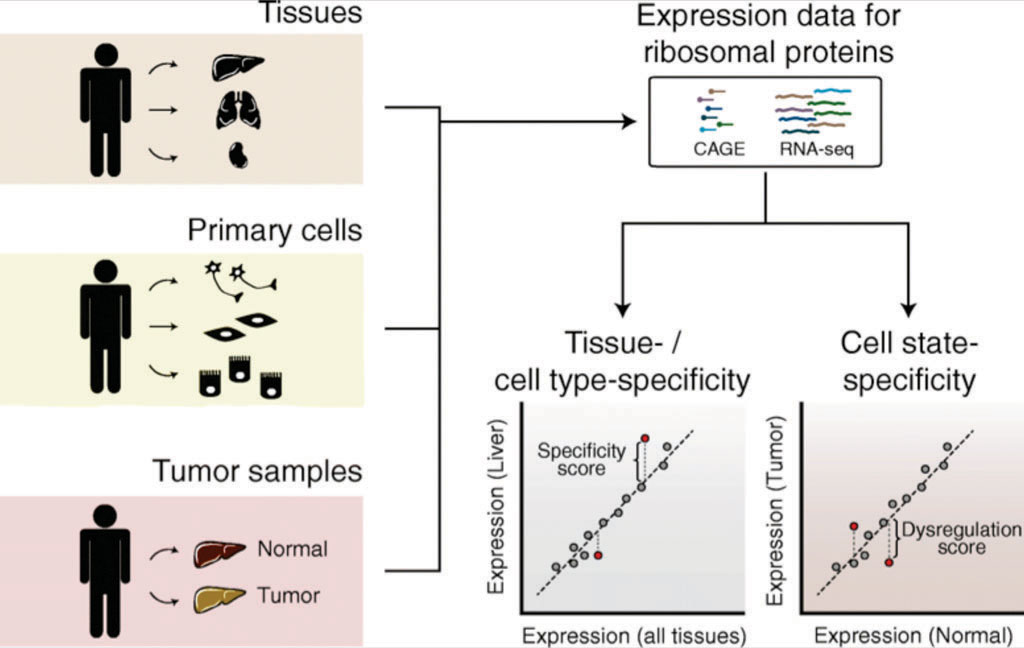Ribosomal Protein Expression Specifies Normal and Malignant Human Cells
By LabMedica International staff writers
Posted on 29 Dec 2016
Proteins are the building blocks of life, produced by molecular machines called ribosomes. A human ribosome is composed of four ribosomal RNAs (rRNAs) and 80 ribosomal proteins (RPs), and its structure is believed to be largely invariant.Posted on 29 Dec 2016
However, recent studies have started to uncover some degree of variability in ribosomal components, such as at the level of rRNA modifications and RP expression. These have also been linked to both ribosomal function and the physiological state of cells.

Image: An evaluation of RP expression specificity across human tissues, primary cells, and tumors (Photo courtesy of University of Basel\'s Biozentrum).
Scientists at the University of Basel (Switzerland) included in their analysis all cancer types for which matched normal and tumor solid tissue samples were available for at least five patients. For each patient, they computed RP dysregulation scores as the standardized residuals estimated from the linear fit between the RP expression levels in the tumor and normal tissue samples. For each cancer type, they then calculated the median dysregulation score for each RP across all patients.
The scientists found that found that human tissues display a notable level of RP expression heterogeneity, with around one quarter of all RP genes exhibiting tissue-specific expression. Attesting for their functional relevance, these expression patterns are also conserved between vertebrate species that are hundreds of million years apart. They found a high degree of RP expression heterogeneity in hematopoietic cells, where a small subset of RPs can discriminate cell types belonging to different hematopoietic lineages. They observed intriguing patterns of RP expression in cancers. Several RP genes, some of which had been previously associated with p53 activation, consistently exhibited negative dysregulation scores across cancers.
The authors concluded that the study reveals an unanticipated plasticity of RP expression across normal and malignant human cells. They found that RPs can help in the identification of cell types and that cancer cells exhibit complex, yet reproducible patterns of RP expression, which could serve as prognostic or diagnostic markers.
Mihaela Zavolan, MD, PhD, a professor and senior author of the study said, “We were quite surprised to find that the expression level of just three ribosomal proteins allows a fairly accurate prognosis of disease progression, comparable to the best predictive markers that are currently known.” The study was published on November 26, 2016, in the journal Genome Biology.
Related Links:
University of Basel














